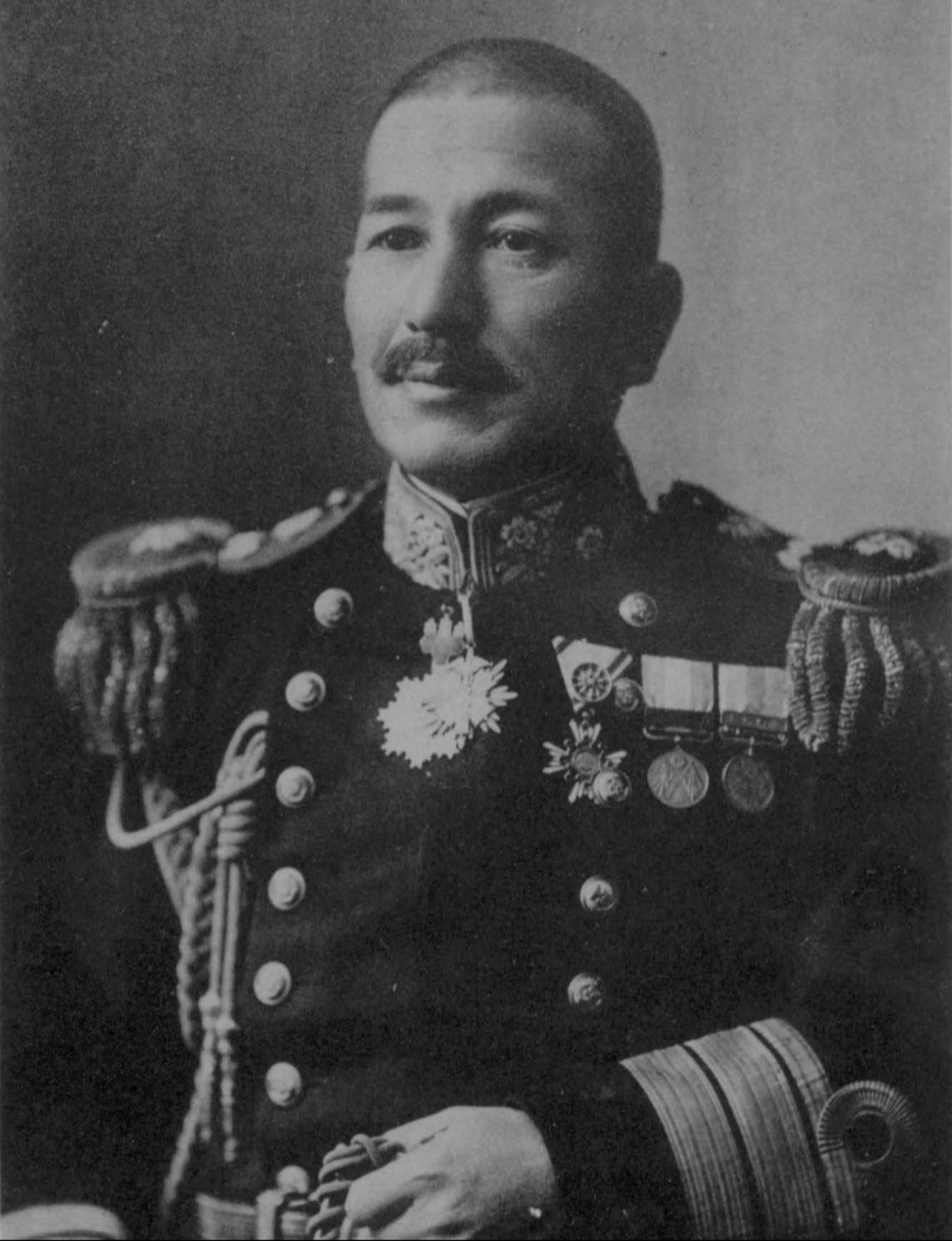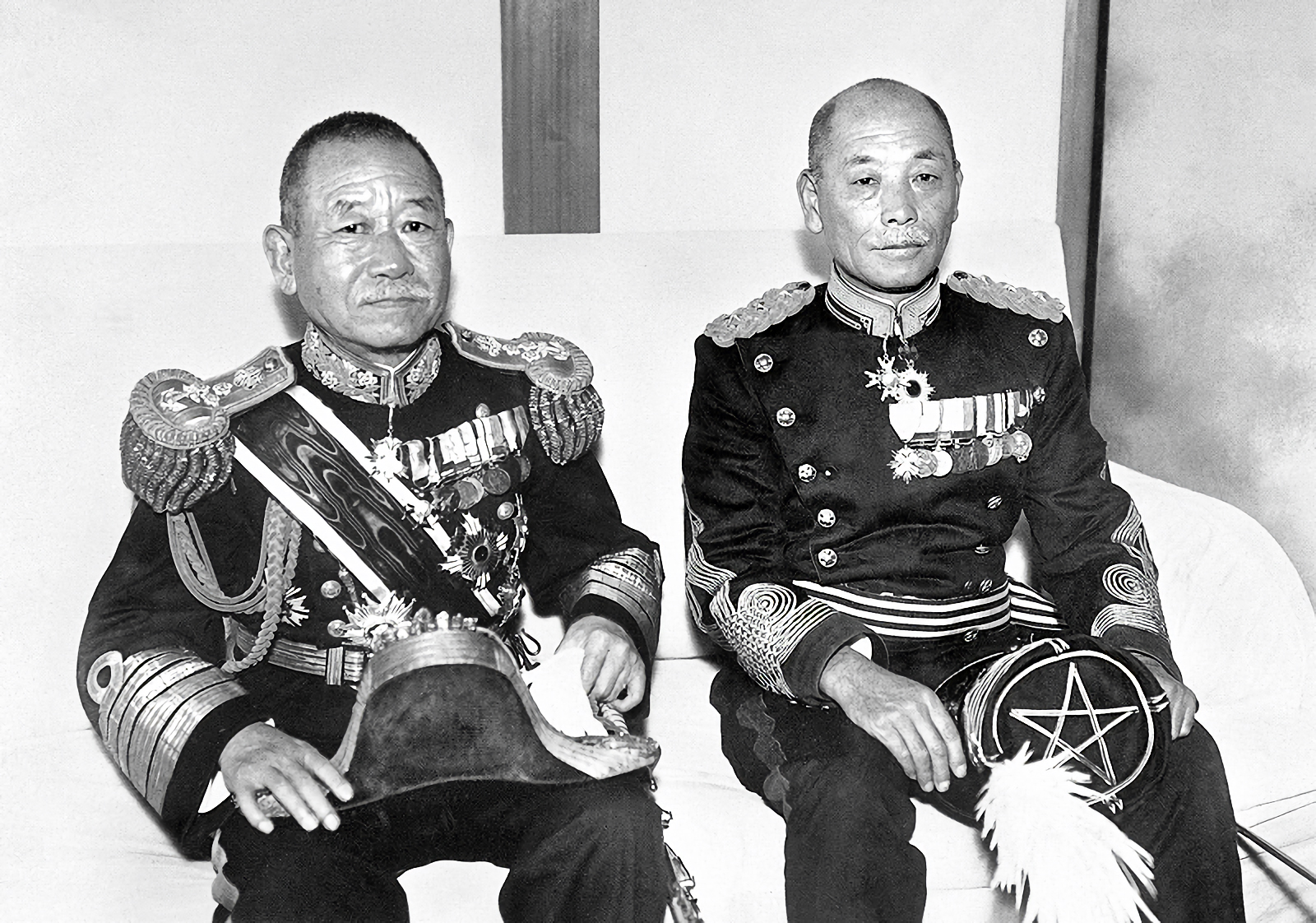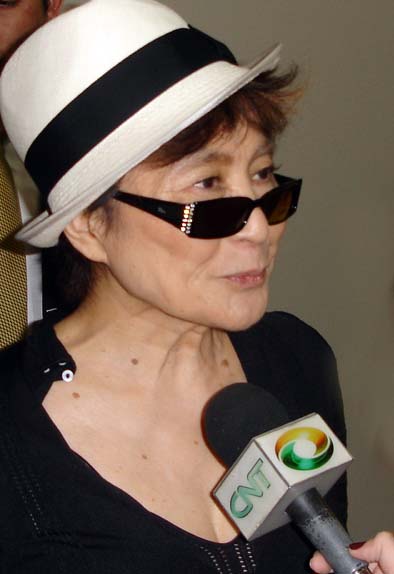|
1868 In Japan
Events from the year 1868 in Japan. It corresponds to Keiō 4 and Meiji 1 in the Japanese calendar. In the history of Japan, it marks the beginning of the Meiji period on October 23 under the reign of Emperor Meiji. Incumbents *Emperor: Emperor Meiji Events *January 6 (''Keiō 3, 10th day of the 12th month'') – The restoration of the Imperial government was announced to the ''kuge''. The year 1868 began as Keio 3, and did not become Meiji 1 until the 8th day of the 9th month of Keio 4, i.e., October 23; although retrospectively, it was quoted as the first year of the new era from 25 January onwards. *January 27–31 – Battle of Toba–Fushimi *January 28 – Battle of Awa *February 2 – Fall of Osaka castle *March 29 – Battle of Kōshū-Katsunuma and Battle of Hokuetsu *May 10–14 – Battle of Utsunomiya Castle *July 4 – Battle of Ueno *September 3 (''Keiō 4, 17th day of the 7th month'') – Emperor Meiji announces that the name of the city of Edo was bein ... [...More Info...] [...Related Items...] OR: [Wikipedia] [Google] [Baidu] |
Keiō
was a after '' Genji'' and before '' Meiji''. The period spanned the years from May 1865 to October 1868. The reigning emperors were and . Change of era * May 1, 1865 (''Genji 2/Keiō 1, 7th day of the 4th month'') : The new era name of ''Keiō'' (meaning "Jubilant Answer") was created to mark the Kinmon Incident. The previous era ended and a new one commenced in ''Genji'' 2. Events of the ''Keiō'' era * 1866 (''Keiō 2''): '' Goryōkaku'' completed * August 29, 1866 (''Keiō 2, 20th day of the 7th month''): Shōgun Iemochi died at Osaka; and the bakufu petitioned that Hitotsubashi Yoshinobu should be appointed as his successor.Ponsonby-Fane, Richard. (1956). ''Kyoto: The Old Capital of Japan, 794-1869'', p. 326. * January 10, 1867 (''Keiō 2, 5th day of the 12th month''): Yoshinobu was appointed shōgun. * January 30, 1867 (''Keiō 2, 25th day of the 12th month''): Emperor Komei died. * February 13, 1867 (''Keiō 3, 9th day of the 1st month''): Mutsuhito ascended to the ... [...More Info...] [...Related Items...] OR: [Wikipedia] [Google] [Baidu] |
Nengō
The , also known as , is the first of the two elements that identify years in the Japanese era calendar scheme. The second element is a number which indicates the year number within the era (with the first year being ""), followed by the literal "" meaning "year". Era names originated in 140 BCE in China, during the reign of the Emperor Wu of Han. As elsewhere in East Asia, the use of era names was originally derived from Chinese imperial practice, although the Japanese system is independent of the Chinese, Korean, and Vietnamese era-naming systems. Unlike these other similar systems, Japanese era names are still in use. Government offices usually require era names and years for official papers. The five era names used since the end of the Edo period in 1868 can be abbreviated by taking the first letter of their romanized names. For example, S55 means Shōwa 55 (i.e. 1980), and H22 stands for Heisei 22 (2010). At 62 years and 2 weeks, Shōwa is the longest era to date. The cur ... [...More Info...] [...Related Items...] OR: [Wikipedia] [Google] [Baidu] |
1918 In Japan
Events in the year 1918 in Japan. Incumbents *Emperor: Taishō *Prime Minister: **Terauchi Masatake (until September 29) **Hara Takashi (from September 29) Governors *Aichi Prefecture: Matsui Shigeru *Akita Prefecture: Hijoki Kawaguchi *Aomori Prefecture: Takeji Kawamura (until 3 October); Ushimaro Sawada (starting 3 October) *Ehime Prefecture: Raizo Wakabayashi *Fukui Prefecture: Kawashima Miki *Fukushima Prefecture: Takukichi Kawasaki *Gifu Prefecture: Kanokogi Kogoro *Gunma Prefecture: Tomojiro Nakagawa *Hiroshima Prefecture: Eitaro Mabuchi (until 7 May); Yasukouchi Asakichi (starting 7 May) *Hyogo Prefecture: Seino Chotarno (until month unknown) *Ibaraki Prefecture: Yuichiro Chikaraishi *Iwate Prefecture: Rinpei Otsu *Kagawa Prefecture: Sakata Kanta *Kanagawa Prefecture: Chūichi Ariyoshi *Kochi Prefecture: Takeo Kakinuma *Kumamoto Prefecture: Ota Masahiro * Kyoto Prefecture: Jūshirō Kiuchi (until May); Eitaro Mabuchi (starting May) *Mie Prefecture: Miki ... [...More Info...] [...Related Items...] OR: [Wikipedia] [Google] [Baidu] |
Akiyama Saneyuki
was a Meiji-period career officer in the Imperial Japanese Navy. He was famous as a planner of Battle of Tsushima in the Russo-Japanese War. The Japanese general Akiyama Yoshifuru was his elder brotherDupuy, Encyclopedia of Military Biography and the Japanese politician Hisako Ōishi was his granddaughter. Biography Early life and career Akiyama was born in Matsuyama Domain, Iyo Province, as a son of a poor ''samurai''. As a youth, he studied literature, especially traditional ''waka'' poetry. The famous poet Masaoka Shiki was his friend from childhood. Later the two young men went to Tokyo to study literature and Akiyama began to prepare for entry into the Literature Department of Tokyo Imperial University. However, Akiyama was forced to abandon his study of letters as his elder brother Yoshifuru ordered him to go to Naval Academy in Tsukiji, Tokyo instead, largely due to the economically severe condition of the Akiyama family. While Akiyama was a student, the Naval Academy ... [...More Info...] [...Related Items...] OR: [Wikipedia] [Google] [Baidu] |
1952 In Japan
Events in the year 1952 in Japan. Incumbents *Emperor: Hirohito *Prime Minister: Shigeru Yoshida *Chief Cabinet Secretary: Shigeru Hori until October 30, Taketora Ogata *Chief Justice of the Supreme Court: Kōtarō Tanaka *President of the House of Representatives: Jōji Hayashi until August 1, Banboku Ōno from August 26 to August 28 and from October 24 *President of the House of Councillors: Naotake Satō Governors *Aichi Prefecture: Mikine Kuwahara *Akita Prefecture: Tokuji Ikeda *Aomori Prefecture: Bunji Tsushima *Chiba Prefecture: Hitoshi Shibata *Ehime Prefecture: Sadatake Hisamatsu *Fukui Prefecture: Harukazu Obata *Fukuoka Prefecture: Katsuji Sugimoto *Fukushima Prefecture: Sakuma Ootake *Gifu Prefecture: Kamon Muto *Gunma Prefecture: Yoshio Iyoku (until 4 July); Shigeo Kitano (starting 5 August) *Hiroshima Prefecture: Hiroo Ōhara *Hokkaido Prefecture: Toshifumi Tanaka *Hyogo Prefecture: Yukio Kishida *Ibaraki Prefecture: Yoji Tomosue *Ishikawa Prefectur ... [...More Info...] [...Related Items...] OR: [Wikipedia] [Google] [Baidu] |
Keisuke Okada
was an admiral in the Imperial Japanese Navy, politician and Prime Minister of Japan from 1934 to 1936. Biography Early life Okada was born on 20 January 1868, in Fukui Prefecture, the son of a samurai of the Fukui Domain. He attended the 15th class of the Imperial Japanese Naval Academy, graduating 7th out of a class of 80 cadets in 1889. He served as a midshipman on the ironclad warship ''Kongō'' and the cruiser . He was commissioned an ensign on 9 July 1890. He later served as lieutenant on the and as well as the corvette ''Hiei''.Nishida, Imperial Japanese Navy In the First Sino-Japanese War, Okada served on the . After his graduation from the Naval Staff College, he subsequently served on the and as executive officer on the . He was promoted to lieutenant on 9 December 1894, to lieutenant-commander on 29 September 1899 and to commander on 13 July 1904. During the Russo-Japanese War, Okada served as executive officer on a successor of vessels, including the , and ' ... [...More Info...] [...Related Items...] OR: [Wikipedia] [Google] [Baidu] |
1948 In Japan
Events in the year 1948 in Japan. Incumbents *Supreme Commander Allied Powers: Douglas MacArthur *Emperor: Hirohito *Prime Minister: Tetsu Katayama ( S–Kanagawa) until March 10, Hitoshi Ashida ( D–Kyōto) until October 15, Shigeru Yoshida ( L–Kōchi, 2nd term, 1st under the Constitution of the State of Japan) * Chief Cabinet Secretary: Suehiro Nishio (S–Ōsaka) until March 10, Gizō Tomabechi (D–Aomori) until October 15, Eisaku Satō (not Diet member) from October 17 * Chief Justice of the Supreme Court: Tadahiko Mibuchi * President of the House of Representatives: Komakichi Matsuoka (S–Tokyo) until December 23 * President of the House of Councillors: Tsuneo Matsudaira ( Ryokufūkai–Fukushima) * Diet sessions: 2nd (regular session opened in December 1947, to July 5), 3rd (extraordinary, October 11 to November 30), 4th (regular, from December 1 to dissolution on December 23) Governors *Aichi Prefecture: Hideo Aoyagi *Akita Prefecture: Kosaku Hasuike *Aomori Pref ... [...More Info...] [...Related Items...] OR: [Wikipedia] [Google] [Baidu] |
Prime Minister Of Japan
The prime minister of Japan (Japanese: 内閣総理大臣, Hepburn: ''Naikaku Sōri-Daijin'') is the head of government of Japan. The prime minister chairs the Cabinet of Japan and has the ability to select and dismiss its Ministers of State. The prime minister also serves as the civilian commander-in-chief of the Japan Self Defence Forces and as a sitting member of the House of Representatives. The individual is appointed by the emperor of Japan after being nominated by the National Diet and must retain the nomination of the lower house and answer to parliament to remain in office. The position and nature of this title allow the holder to reside in and work at the Prime Minister's Official Residence in Nagatacho, Chiyoda, Tokyo, close to the National Diet Building. Fumio Kishida is the current prime minister of Japan, replacing Yoshihide Suga on 4 October 2021. As of , there have been 102 prime ministers. Designation Abbreviations In Japanese, due to the special ... [...More Info...] [...Related Items...] OR: [Wikipedia] [Google] [Baidu] |
Suzuki Kantarō
is a Japanese multinational corporation headquartered in Minami-ku, Hamamatsu, Japan. Suzuki manufactures automobiles, motorcycles, all-terrain vehicles (ATVs), outboard marine engines, wheelchairs and a variety of other small internal combustion engines. In 2016, Suzuki was the eleventh biggest automaker by production worldwide. Suzuki has over 45,000 employees and has 35 production facilities in 23 countries, and 133 distributors in 192 countries. The worldwide sales volume of automobiles is the world's tenth largest, while domestic sales volume is the third largest in the country. Suzuki's domestic motorcycle sales volume is the third largest in Japan. History In 1909, Michio Suzuki (1887–1982) founded the Suzuki Loom Works in the small seacoast village of Hamamatsu, Japan. Business boomed as Suzuki built weaving looms for Japan's giant silk industry. In 1929, Michio Suzuki invented a new type of weaving machine, which was exported overseas. The company's first 30 ... [...More Info...] [...Related Items...] OR: [Wikipedia] [Google] [Baidu] |
1933 In Japan
Events from the year 1933 in Japan. It corresponds to Shōwa 8 (昭和8年) in the Japanese calendar. Incumbents *Emperor: Hirohito *Empress consort: Empress Kōjun *Prime Minister: Saitō Makoto Governors *Aichi Prefecture: Endo Ryusaku (until 21 July); Osamu (starting 21 July) *Akita Prefecture: Takabe Rokuzo *Aomori Prefecture: Taku Yasunobu *Ehime Prefecture: Jiro Ichinohe *Fukui Prefecture: Shigeo Odachi *Fukushima Prefecture: Akagi Tomoharo (until 21 July); Shiomi Hatakeyama (starting 21 July) *Gifu Prefecture: Umekichi Miyawaki *Gunma Prefecture: Masao Kanazawa *Hiroshima Prefecture: Michio Yuzawa * List of governors of Ibaraki Prefecture, Ibaraki Prefecture: Abe Kashichi *Iwate Prefecture: Hidehiko Ishiguro *Kagawa Prefecture: Seikichi Kimijima (until 23 June); Yoshisuke Kinoshita (starting 23 June) *Kanagawa Prefecture: Sukenari Yokoyama *Kumamoto Prefecture: Keiichi Suzuki *Kochi Prefecture: Sakama Osamu * Kyoto Prefecture: Saito Munenori *Mie Prefecture: H ... [...More Info...] [...Related Items...] OR: [Wikipedia] [Google] [Baidu] |
Shimizu Shikin
Shimizu Shikin ( ja, 清水紫琴; 1868–1933), pen name of Shimizu Toyoko, was a Japanese novelist and women's rights activist of the Meiji period in Japan. A lecturer on equality and social issues, she was forced to turn to writing when the law changed to bar women from political assembly. She became one of the first women professional journalists in Japan. Biography Shimizu Toyoko ( ja, 清水豊子) was born on 11 January 1868 in Bizen, Okayama, Japan to Shimizu Sadamoto. Most of her childhood was spent in Kyoto, where her father worked as a government bureaucrat. She graduated from Kyoto Municipal Women’s Teacher Training School at the age of fourteen and was considered highly educated in a society which still believed education beyond primary school for women was not worthwhile. Unable to continue her education, Shimizu made use of her father’s library which contained western literary classics as well as works by Japanese intellectuals. In 1885, she married Okazaki Masah ... [...More Info...] [...Related Items...] OR: [Wikipedia] [Google] [Baidu] |
1903 In Japan
Events in the year 1903 in Japan. It corresponds to Meiji 36 (明治36年) in the Japanese calendar. Incumbents *Emperor: Emperor Meiji Governors *Aichi Prefecture: Masaaki Nomura *Akita Prefecture: Shiba Sankarasu then Ichiro Tsubaki *Aomori Prefecture: Ichiji Yamanouchi then Katsutaro Inuzuka then Shotaro Nishizawa *Ehime Prefecture: Tai Neijro *Fukui Prefecture: Suke Sakamoto *Fukushima Prefecture: Arita Yoshisuke *Gifu Prefecture: Kawaji Toshikyo *Gunma Prefecture: Yoshimi Teru *Hiroshima Prefecture: Asada Tokunori then Tokuhisa Tsunenori *Ibaraki Prefecture: Chuzo Kono then Teru Terahara *Iwate Prefecture: Ganri Hojo *Kagawa Prefecture: Motohiro Onoda *Kochi Prefecture: Kinyuu Watanabe then Munakata Tadashi *Kumamoto Prefecture: Egi Kazuyuki * Kyoto Prefecture: Baron Shoichi Omori *Mie Prefecture: Kamon Furusha *Miyagi Prefecture: Terumi Tanabe *Miyazaki Prefecture: Toda Tsunetaro *Nagano Prefecture: Seki Kiyohide *Niigata Prefecture: Hiroshi Abe *Oita Pref ... [...More Info...] [...Related Items...] OR: [Wikipedia] [Google] [Baidu] |





